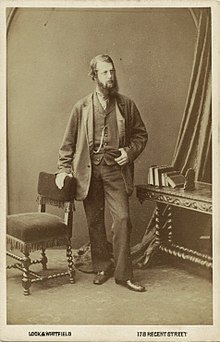
Helmsdale is a village on the east coast of Sutherland, in the Highland council area of Scotland. The modern village was planned in 1814 to resettle communities that had been removed from the surrounding straths as part of the Highland Clearances.
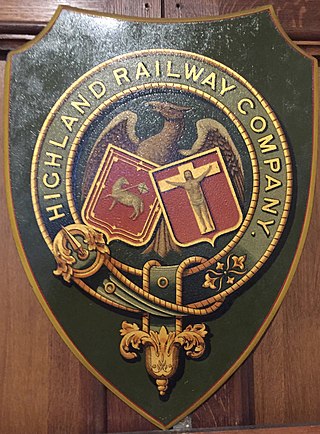
The Highland Railway (HR) was one of the smaller British railways before the Railways Act 1921, operating north of Perth railway station in Scotland and serving the farthest north of Britain. Based in Inverness, the company was formed by merger in 1865, absorbing over 249 miles (401 km) of line. It continued to expand, reaching Wick and Thurso in the north and Kyle of Lochalsh in the west, eventually serving the counties of Caithness, Sutherland, Ross & Cromarty, Inverness, Perth, Nairn, Moray and Banff. Southward it connected with the Caledonian Railway at Stanley Junction, north of Perth, and eastward with the Great North of Scotland Railway at Boat of Garten, Elgin, Keith and Portessie.
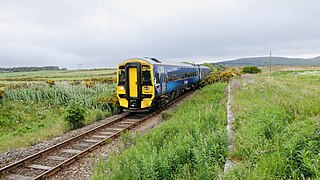
The Far North Line is a rural railway line entirely within the Highland area of Scotland, extending from Inverness to Thurso and Wick. As the name suggests, it is the northernmost railway in the United Kingdom. The line is entirely single-track, with only passing loops at some intermediate stations allowing trains to pass each other. In common with other railway lines in the Highlands and northern Lowlands, it is not electrified and all trains are diesel-powered.

Brora is a village in the east of Sutherland, in the Highland area of Scotland.

Golspie is a village and parish in Sutherland, Highland, Scotland, which lies on the North Sea coast in the shadow of Ben Bhraggie. It has a population of around 1,350.

Golspie railway station is a railway station serving the village of Golspie in the Highland council area of Scotland. It is on the Far North Line, situated between Rogart and Dunrobin Castle, 84 miles 30 chains (135.8 km) from Inverness. ScotRail, who manage the station, operate all services.

Dunrobin Castle railway station is a railway station on the Far North Line in Scotland, serving Dunrobin Castle near the village of Golspie in the Highland council area. The station is 86 miles 22 chains (138.8 km) from Inverness, between Golspie and Brora. ScotRail, who manage the station, operate all services.

Brora railway station is a railway station serving the small town of Brora in the Highland council area of Scotland. The station is on the Far North Line, 90 miles 48 chains (145.8 km) from Inverness, between Dunrobin Castle and Helmsdale. ScotRail, who manage the station, operate all services.

Helmsdale railway station is a railway station serving the village of Helmsdale in the Highland council area, northern Scotland. It is located on the Far North Line, between Brora and Kildonan, 101 miles 40 chains (163.3 km) from Inverness. ScotRail, who manage the station, operate all services.

Forsinard railway station is a railway station serving the village of Forsinard in the Highland council area in the north of Scotland. It is located on the Far North Line, 125 miles 69 chains from Inverness, between Kinbrace and Altnabreac. The station is managed by ScotRail, who operate the services at the station.
The Sutherland and Caithness Railway was a Scottish railway company that built a line from Helmsdale, the terminus of the Duke of Sutherland's Railway to Wick and Thurso in Caithness, giving the northern towns access to Inverness. It was driven through by the efforts of the 3rd Duke of Sutherland and the engineer Joseph Mitchell in the face of apathy from interests in Wick.
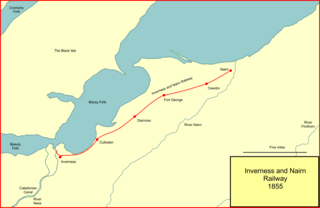
The Inverness and Nairn Railway was a railway company that operated between the burghs in the company name. It opened its line in 1855 and its passenger business was instantly successful. At first it was not connected to any other line. However it was seen as a first step towards connecting Inverness and Central Scotland, via Aberdeen and when feasible, directly southwards.
The Sutherland Railway was a railway company authorised in 1865 to build a line from Bonar Bridge station to Brora, a distance of nearly 33 miles, in the north of Scotland. This was to be continuation of a route from Inverness to Bonar Bridge that had been built by the Inverness and Ross-shire Railway; ultimately the line was extended to Thurso.
The Inverness and Ross-shire Railway was a Scottish railway company formed in 1860 to build a line from Inverness to Invergordon. It opened in 1862 as far as Dingwall and in 1863 to Invergordon. It was extended to a Bonar Bridge station in 1864. It provided the basis for later extensions that eventually reached Thurso, forming the Far North Line. The Dingwall and Skye Railway branched off at Dingwall to reach the Kyle of Lochalsh.
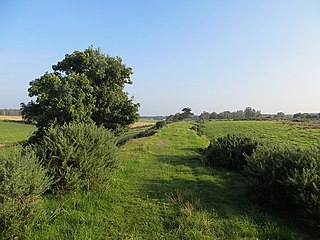
The Inverness and Perth Junction Railway (I&PJR) was a railway company that built a line providing a more direct route between Inverness and the south for passengers and goods. Up to the time of its opening, the only route was a circuitous way through Aberdeen. The I&PJR was built from a junction with the friendly Inverness and Aberdeen Junction Railway at Forres to the Perth and Dunkeld Railway at Dunkeld.
The Perth and Dunkeld Railway was a Scottish railway company. It was built from a junction with the Scottish Midland Junction Railway at Stanley, north of Perth, to a terminus at Birnam, on the south bank of the River Tay opposite Dunkeld.

The Dornoch Light Railway was a branch railway in Scotland that ran from The Mound on the Far North Line to Dornoch, the county town of Sutherland.

The Mound railway station was a former railway station on the Far North Line near the head of Loch Fleet in Scotland. For more than half of its life it was the junction for Dornoch.
The name Dunrobin was given to two Scottish steam locomotives.
The Far North Line was built in several stages through sparsely populated and undulating terrain. Extending to 161 miles (259 km), it runs north from Inverness to Wick and Thurso in Caithness, and currently carries a regular passenger train service.



